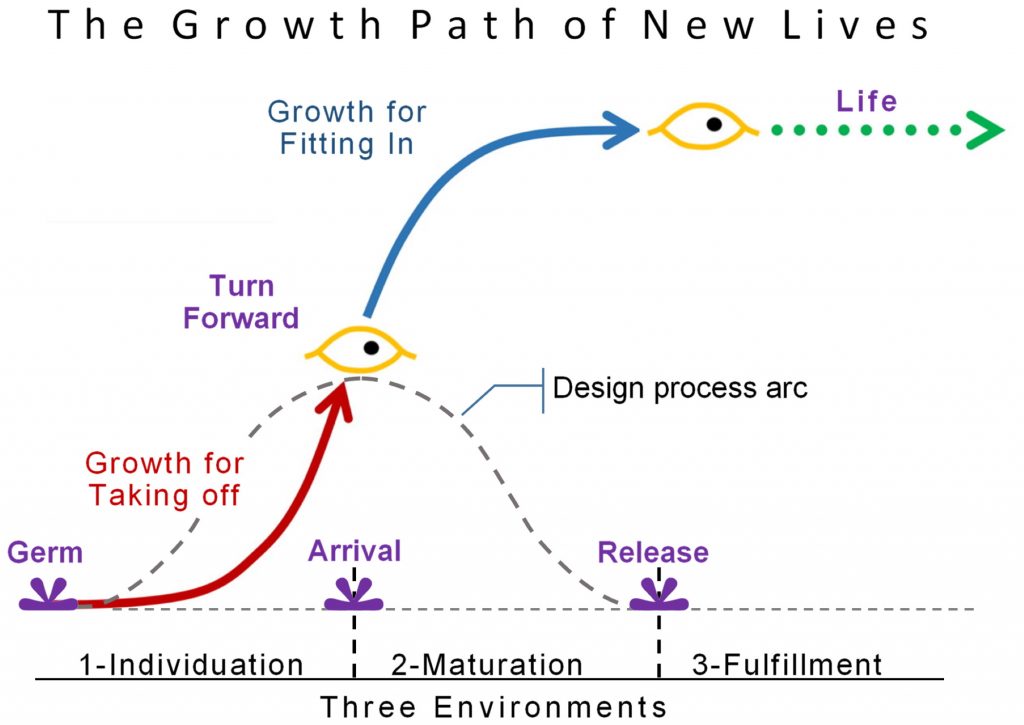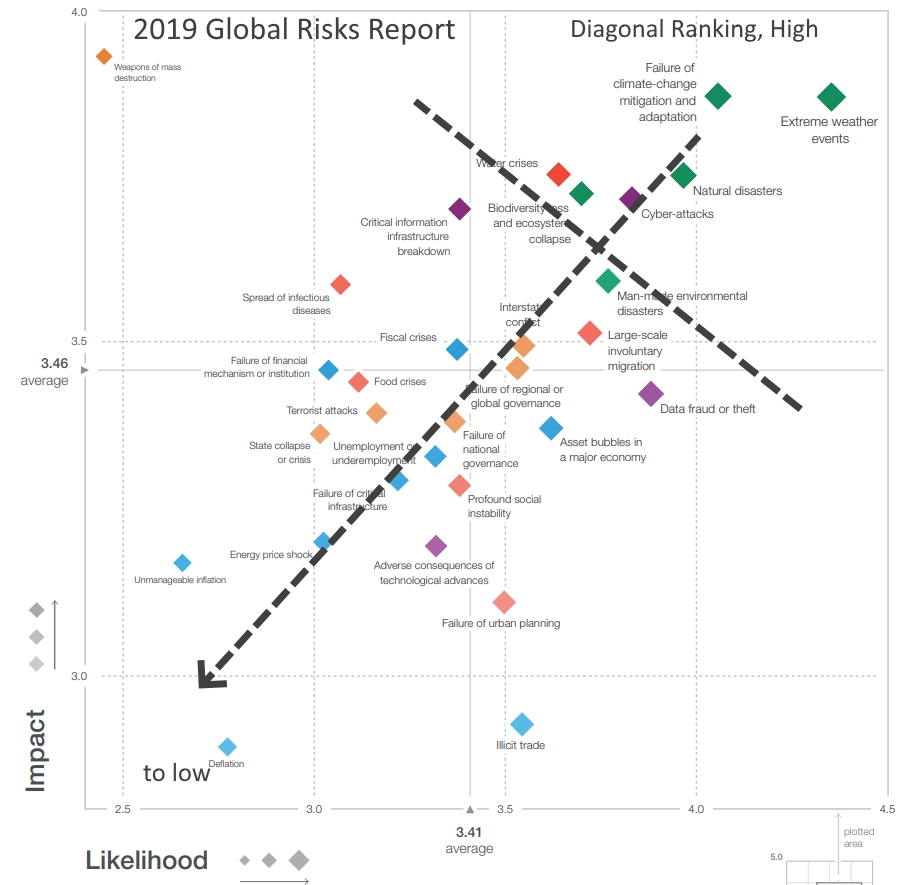A. STRUGGLE AND BREAKTHROUGH
After inception originates a desire, a long struggle for change follows and then a fast breakout and establishment
– To understand these best, think of examples in different circumstances from your experience, personal, business, world, or in nature.
For the transformation to an Ecological-Civilization there’s the barrier of needing to introduce people to something very new. If we study examples of how transformations happen in our memory we can find ways to convince people to explore what’s possible.
_________________________________________________________________________
B. FORMING NEW LIVES –
the universal stages of growth and adaptation that create new systems with lives of their own, small, medium, large, in a permissive environment.
Studied carefully, it’s possible to use nature’s own method of building new systems to guide our long-term path, showing us how to move forward from growth. Stage One of new lives is the germination of a seed pattern followed by a start-up burst of development when the new life defines itself as an individual. For enterprises it’s the handshake that sets things in motion and its period of rapid growth. Stage Two is for a new life to find its lasting place, maturing as it adapts to both internal and external limitst, Arriving at it peak of vitality ready for Stage Three, its long creative life. The curves tracing this story line are highly generalized, as are the terms used, but any startup faces these challenges.
Once you get the idea it’s astounding how many kinds of familiar transformations, on all scales, follow this natural system-building process for new lives. For projects large and small we execute our plans first starting with a concept, then working it till it is ready for its climax environment, — individuation followed by maturation and fulfillment

- The start of new life is a “germ,” “spark,” or “seed” pattern, a vision or a fertilized egg, that soon starts to multiply on its internal resource and organize its internal parts, usually in a very protected and forgiving environment. For a human embryo that’s its womb, for an Eco-civilization it’s the virgin earth, giving us whatever we wanted for a long long time.
- Then along with a dramatic change of environment at the limit to growth, there’s a change of life — a “turn forward” to maturing to make new relationships. Like birth, the end of compound growth is a perilous change requiring a great change in relations, resources, and expectations, a big test of survival a system’s will-to-live. It’s called the “turn forward” because attention turns from extrapolating from the seed to making a mature life in the future, in a more challenging environment.
- For our newborn Eco-Civilization, hitting the limits to growth comes as a complete surprise, and will take the emergence of a great will-to-live, and lots of work to pass nature’s universal test of survival for new lives. Most of the human population is still blind to the profound change at hand and thinks growth is life, and that overcoming our troubles will be like returning to the past. It won’t BE THAT AT ALL! We’re heading for mature life, which given nature’s ways could be far better.
As humans, we have distinct advantages for charting our course. We have loads of experience in giving birth to all kinds of systems and giving them lives of their own. Personal relationships are one, requiring that we follow each step in the process and making good choices about going too slow or too fast, among other things. Making dinner is another, needing to be lovingly imagined, assembled, and perfected to serve its purpose. Both home and office projects fit the model too, starting with a seed that grows and is made to fit into the world around it.
So the fact that large systems go through much the same birthing process as small systems is a new discovery. To manage the end of growth for our Eco-civilization will call for all our personal wisdom for what’s right to help us understand what’s too slow and too fast, among other things, for the transition to an Eco-Civilization.
It will also have to do with money, so tied up in driving what seems like a growth imperative for civilization to operate, but is really just a choice of what to invest in. And now we need to invest in better things, like #FAIR_Money.
_________________________________________________________________________
C. Three Horizons:
Allows different people to think of working on different paths, which all work out together naturally. Small steps needed for bigger ones, big strategies that make room smaller ones, things to wind down, things to build up, temporary measures for both.
______________________________________________________________________
D. Panarchy Adaptive Cycle
Based on forest of cultural succession. A very loose model, much of it misleading for transforming our growth system. Might be applicable to the progress of humanity through its long series of failed civilizations, making cultural progress all along. Might be applicable to the ebb and flow of the ‘forests’ of political and intellectual fashion as some of us stumble around trying to imagine the future and others find ever more dastardly ways to say NO.
____________________________________________________________________________
D. Doughnut Economics:
A wonderfully intuitive model, starting with local innovation in designing for internal human needs and external responsibilities builds familiarity with the natural system model of cells in the environment, envisioned to extend to our whole world to take better care of ourselves and the planet. Join the movement.
___________________________________________________________
E. Ever-growing systemic crises.
The only way to address our global limits is with global coordination, and for many things global coordination is absent. The nine planetary bounds referred to in Doughnut Economics are certainly critical, but there are a great many others going unmentioned, equally critical. These include:
- escalating disaster risks due to overdevelopment and climate change
- the growing long-term economic damage to capital resources,
- government problem-solving failures
- growing governmental lust for power
- aging & inflexibility of ever more interdependent and complex systems
- growing social polarization, ….. and other great systemic world crises.
Here’s my long list of planetary boundaries we are rapidly crossing, my Top 100+ Global Crises Growing with Growth. It is based on collecting lists from high-level reports, the major crises getting brief notice in the news, and my own description of flashpoints of unsustainable systemic change. Here’s a link to the 2021 Global Risks Report.
It is my belief that these kinds of growing systemic threats can only be reversed by a movement of global business and investors choosing to shift resources from pushing the harmful limits of wealth to fitting in with a healthy world society and environment.

